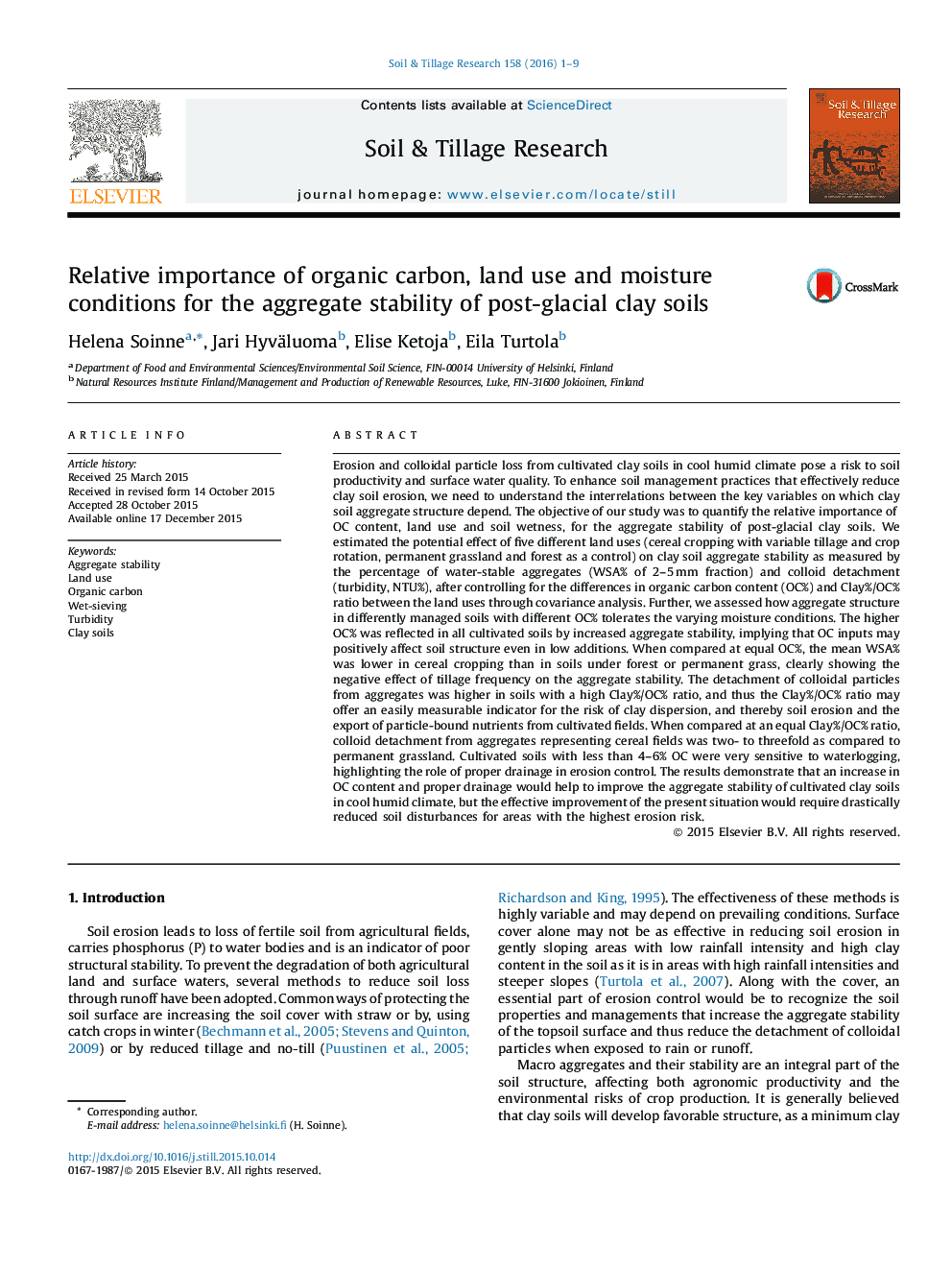| کد مقاله | کد نشریه | سال انتشار | مقاله انگلیسی | نسخه تمام متن |
|---|---|---|---|---|
| 305409 | 513028 | 2016 | 9 صفحه PDF | دانلود رایگان |
• Land use differences in aggregate stability are not fully due to their effect on OC%.
• The higher the clay content, the more OC is needed to stabilize aggregate structure.
• Clay/OC ratio is a potential indicator for colloid dispersion from clay soils.
• Waterlogging is most destructive for cultivated soils with low OC%.
• Effective erosion control relies on reduced soil disturbance, increased OC% and proper drainage.
Erosion and colloidal particle loss from cultivated clay soils in cool humid climate pose a risk to soil productivity and surface water quality. To enhance soil management practices that effectively reduce clay soil erosion, we need to understand the interrelations between the key variables on which clay soil aggregate structure depend. The objective of our study was to quantify the relative importance of OC content, land use and soil wetness, for the aggregate stability of post-glacial clay soils. We estimated the potential effect of five different land uses (cereal cropping with variable tillage and crop rotation, permanent grassland and forest as a control) on clay soil aggregate stability as measured by the percentage of water-stable aggregates (WSA% of 2–5 mm fraction) and colloid detachment (turbidity, NTU%), after controlling for the differences in organic carbon content (OC%) and Clay%/OC% ratio between the land uses through covariance analysis. Further, we assessed how aggregate structure in differently managed soils with different OC% tolerates the varying moisture conditions. The higher OC% was reflected in all cultivated soils by increased aggregate stability, implying that OC inputs may positively affect soil structure even in low additions. When compared at equal OC%, the mean WSA% was lower in cereal cropping than in soils under forest or permanent grass, clearly showing the negative effect of tillage frequency on the aggregate stability. The detachment of colloidal particles from aggregates was higher in soils with a high Clay%/OC% ratio, and thus the Clay%/OC% ratio may offer an easily measurable indicator for the risk of clay dispersion, and thereby soil erosion and the export of particle-bound nutrients from cultivated fields. When compared at an equal Clay%/OC% ratio, colloid detachment from aggregates representing cereal fields was two- to threefold as compared to permanent grassland. Cultivated soils with less than 4–6% OC were very sensitive to waterlogging, highlighting the role of proper drainage in erosion control. The results demonstrate that an increase in OC content and proper drainage would help to improve the aggregate stability of cultivated clay soils in cool humid climate, but the effective improvement of the present situation would require drastically reduced soil disturbances for areas with the highest erosion risk.
Journal: Soil and Tillage Research - Volume 158, May 2016, Pages 1–9
